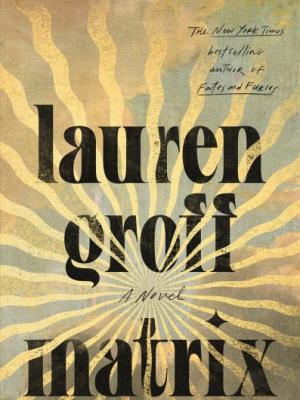
Prior to her latest novel, Matrix (2021), Lauren Groff was best know for her previous book, Fates and Furies, the story of a marriage set over the course of recent decades, a favorite book of President Barack Obama in 2016, a New York Times best-seller, and a finalist for the National Book Award. Well, buckle up, Fates and Furies, because Matrix became an instant best-seller and was a finalist for the National Book Award, too, and it's set in a late 12th, early 13th century convent. As many reviewers have suggested, Lauren Groff can write the heck out of any time, any place.
Born into a family of tall, powerful, educated women, the central character of Matrix, Marie, goes on her first crusade with her mother and aunts as a small girl. She grows up to possess none of the graces that would make her successful at court, and at age 17, unwilling and furious, she is sent by Eleanor of Aquitaine to be the prioress for an abbey that is literally crumbling, its coffers empty, its cupboards bare, the nuns enclosed starving and ill. Dying has become a commonplace occurrence at Marie's new home. This is the Middle Ages, after all. But when human beings are forced to do work they hate and can only fail at, just to feel the shame of their sinful nature, it's no wonder it's difficult to survive, let alone thrive. Upon her arrival, Marie figures out what the nuns like to do, and are successful at accomplishing. Thanks to her, these are the terms by which they are assigned their tasks. Do things go better after that? Yes, indeed.
From there, Matrix follows the arc of Marie's life to its very end, compressing entire decades so that the narrative maintains its momentum and and is, at times, wildly entertaining. In my years of reading, I have rarely immersed myself in a protagonist who changes so dramatically, especially in contemporary literature. Marie's evolution is initiated out of necessity, but then, as times passes, she makes choices to turn an initially bad situation—her confinement—into something better. Her curious, intelligent nature and will to succeed, her compulsion to protect and serve those under her watch, her selfish desires, and possibly, just possibly, her growing sense of a Divine presence (or are those visions of the Virgin Mary used only to accomplish her desires?) turn what might otherwise have been an interesting study of life in the Middle Ages into a great adventure. Marie ultimately becomes Abbess, the mother hen of a vast and flourishing flock that includes both nuns and servants, and also the community of workers, healers, and farmers who live on the other side of the labyrinth Marie decides to build to ensure that her community is made up exclusively of women. Along the way she, and those who respect and obey her, make lots of money, wield power, inspire learning and art-making, and recreate the very ground on which they stand. For better or worse? That depends on who you ask.
Lauren Groff has said that she wrote Matrix as a contemporary novel, even though it’s set in the 12th century, in order to retreat from front page news and real world events post-2016. When you read Matrix, you will be able to tease out the possible connection between the Middle Ages and life in the first quarter of the 21st century. Abbess Marie is both of her time, and above and beyond her time.